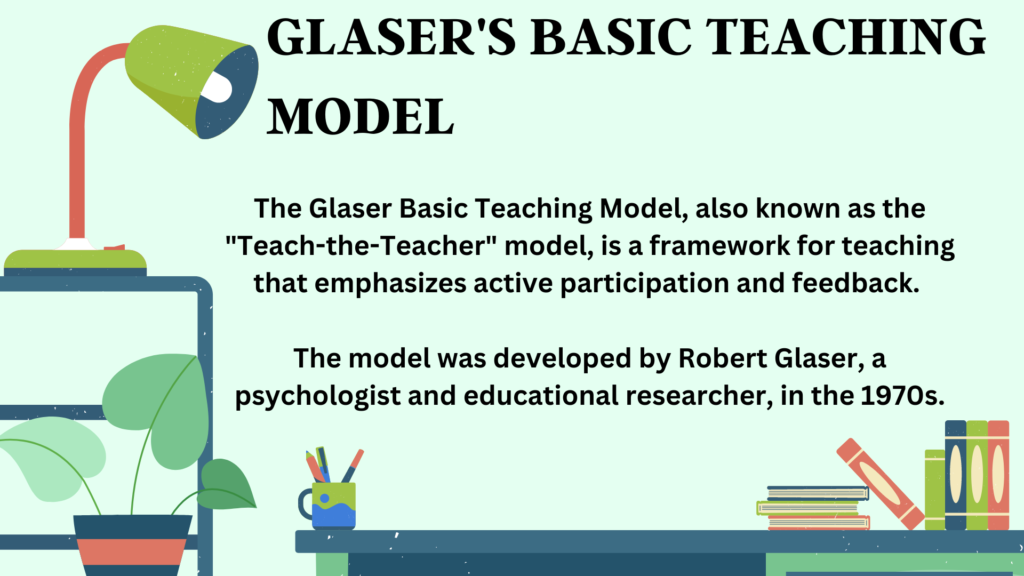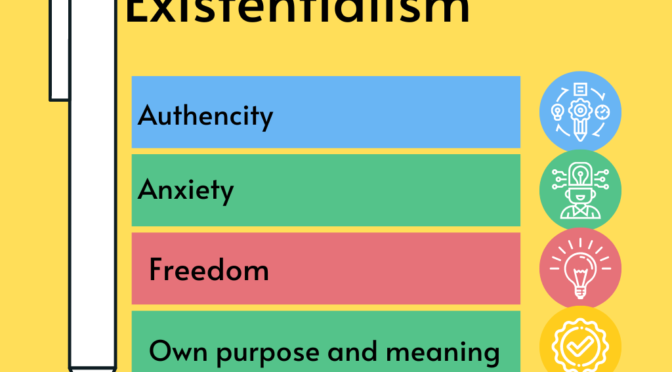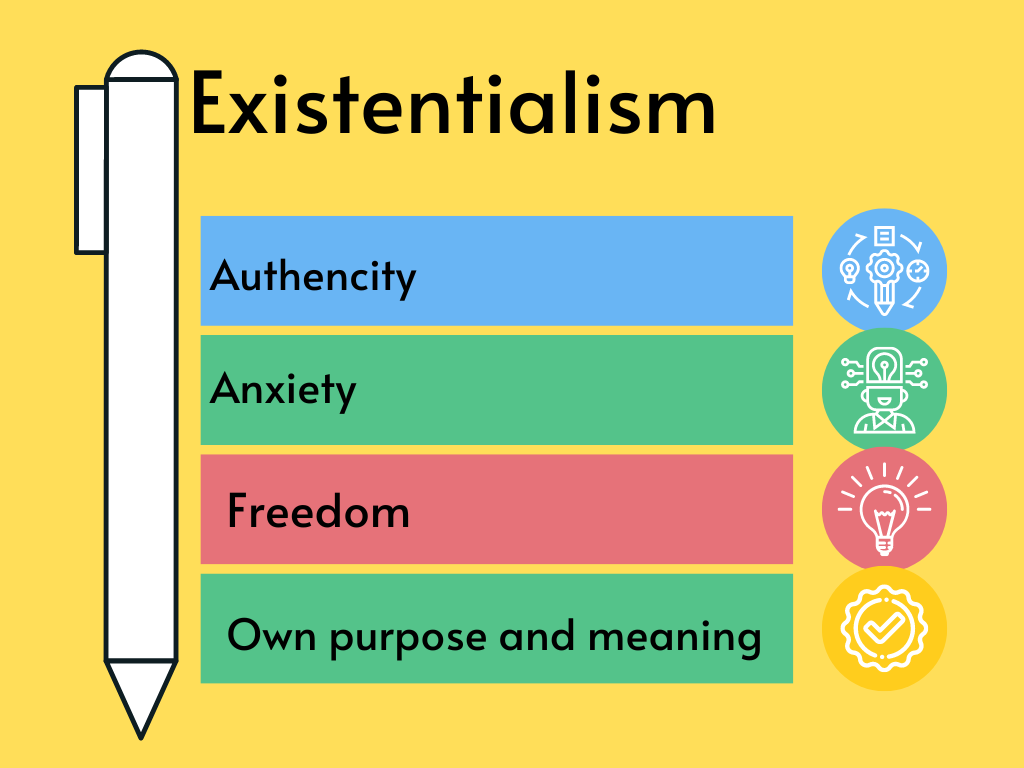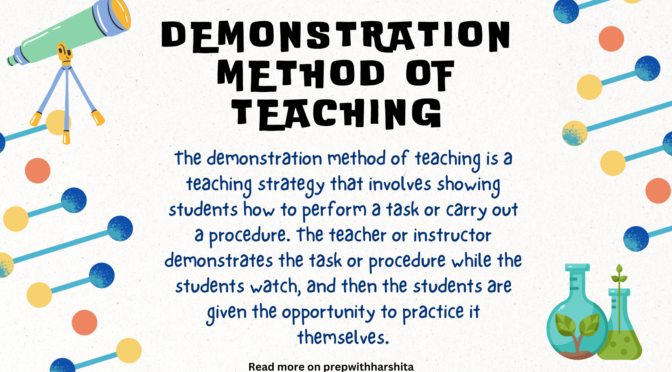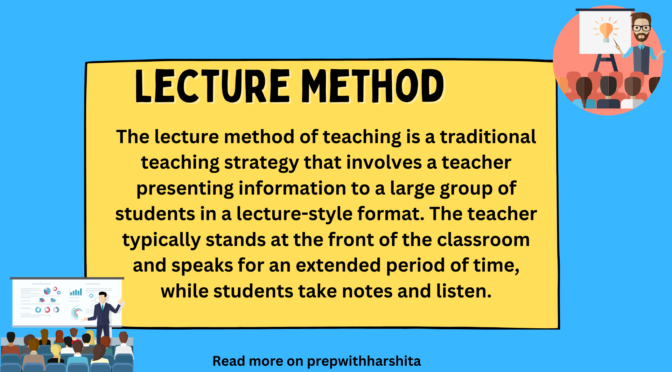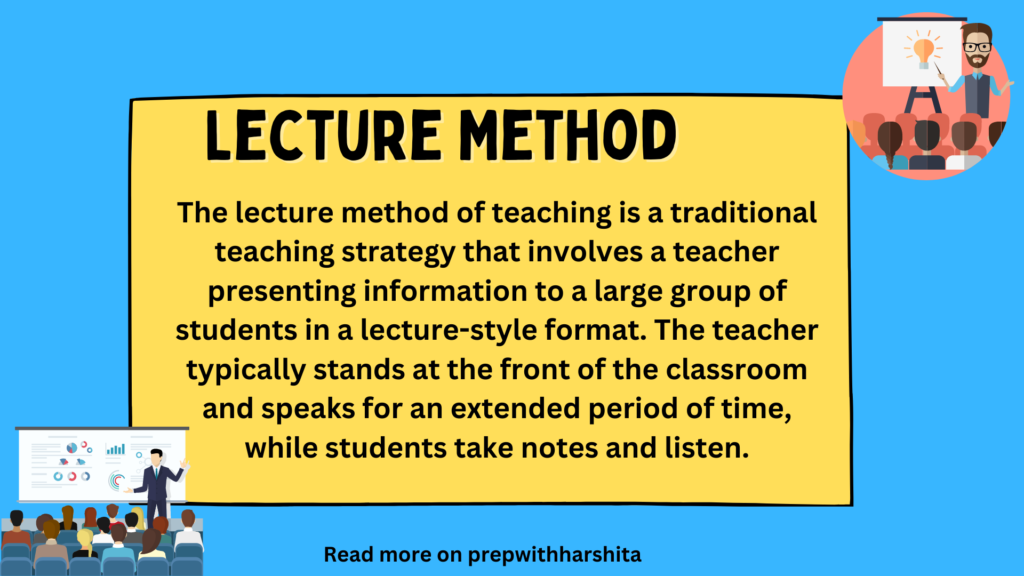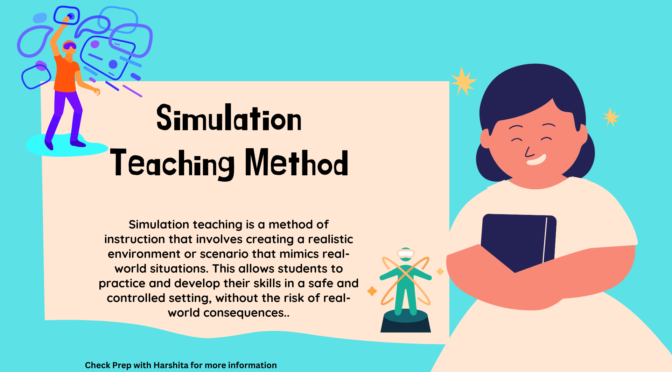The Glaser Basic Teaching Model, also known as the “Teach-the-Teacher” model, is a framework for teaching that emphasizes active participation and feedback. The model was developed by Robert Glaser, a psychologist and educational researcher, in the 1970s.
The Glaser Basic Teaching Model emphasizes the importance of feedback in the learning process. Feedback is provided throughout the presentation and practice phases, and the teacher encourages learners to give feedback to one another.
The Glaser Basic Teaching Model consists of three main phases:
- Preparation: In this phase, the teacher identifies the learning objectives, selects appropriate teaching methods and materials, and prepares the lesson plan.
- Presentation: In this phase, the teacher presents the information to the learners. The information is presented in small segments, and the teacher checks for understanding after each segment.
- Practice: In this phase, the learners practice what they have learned. The teacher provides feedback on the learners’ performance and encourages them to continue practicing until they have mastered the material.
Also Read : Team Teaching
The Glaser Basic Teaching Model stresses the importance of feedback in the learning process. Feedback is provided throughout the presentation and practice phases, and learners are encouraged to give feedback to one another. This model is often used in teacher training programs to help educators develop effective teaching strategies and improve the quality of their teaching.
Overall, the Glaser Basic Teaching Model is a structured approach to teaching that aims to ensure that learners are actively engaged in the learning process and receive feedback on their progress.
Also Visit : Prep with Harshita
